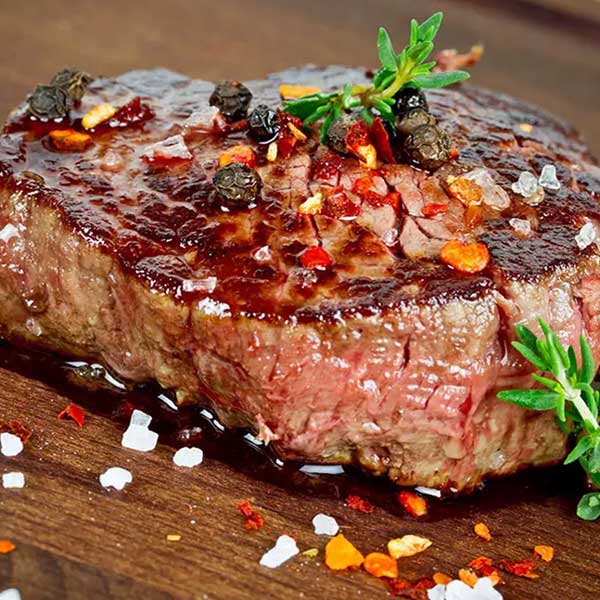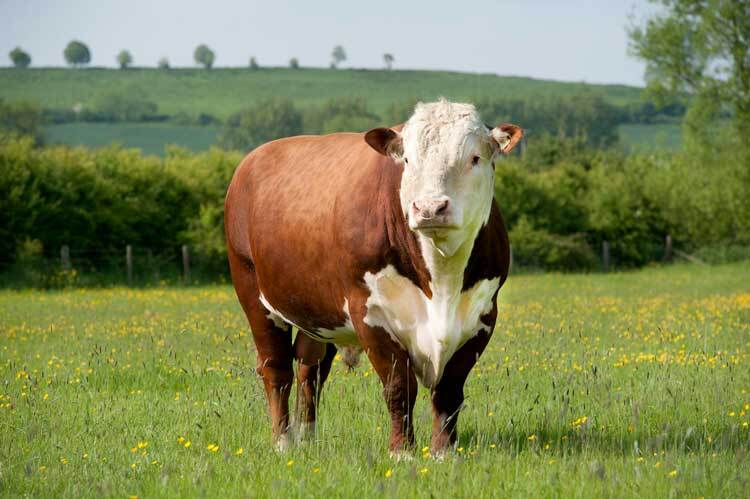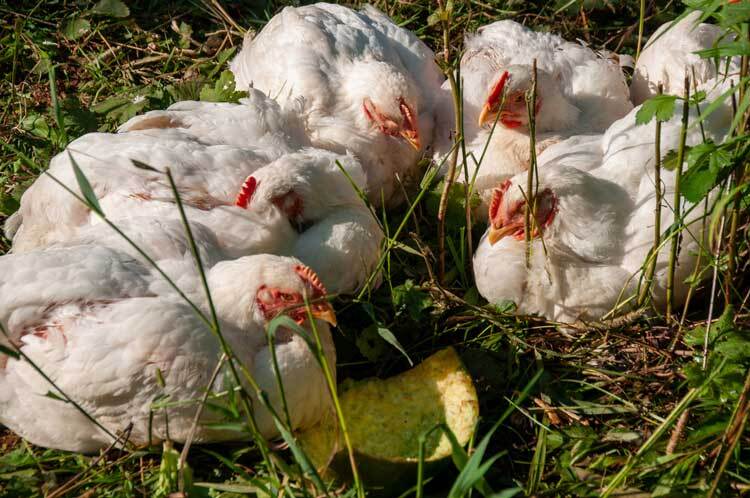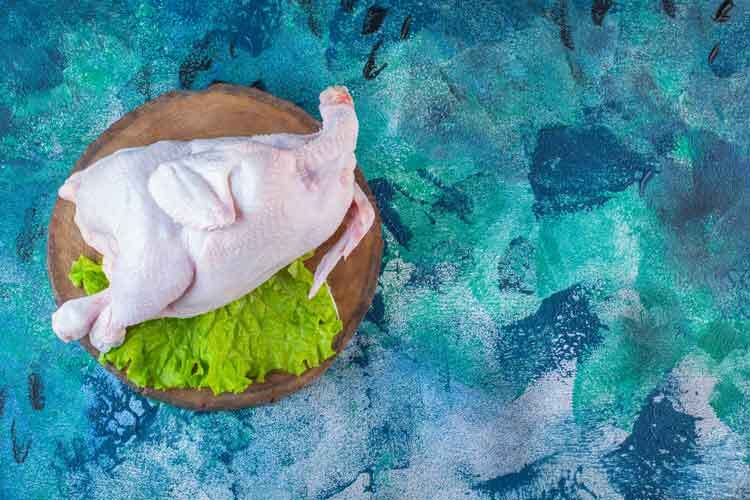Introduction to Our Family Farms
We source our AAA Ontario beef from family run farms in picturesque Haldimand County, known for its rolling hills and lush countryside. They are small, multi-generational farms that has been raising cattle here for over 50 years. Our philosophy is simple – raise happy, healthy cattle in their natural environment.
We believe deeply in sustainable, ethical farming practices. Our cattle are never given added hormones or routine antibiotics. They spend their days roaming freely on our green pastures, living as nature intended. We take great pride in being stewards of the land and providing our cattle with an idyllic, stress-free lifestyle.
Cattle Breeds
Hereford
The Hereford breed originated from Herefordshire, England in the 1700s. Herefords are known for their red bodies and distinctive white faces. They are docile, adaptable cattle that do well on pasture and have excellent marbling qualities.
Some key characteristics of Herefords:
- Hardy, adaptable breed that thrives outdoors on pasture
- Docile temperament
- Highly fertile cows that calve easily
- Excellent foraging ability
- Lean beef with heavy marbling for tenderness
Herefords first came to Canada in 1872 and were originally used as draft animals. Today, they are raised primarily for their high-quality beef.
Angus
Angus cattle originated from Aberdeen and Angus counties in Scotland. They are all black, polled (naturally hornless) cattle known for producing flavourful, marbled beef.
Some key traits of Angus cattle:
- Naturally polled and solid black coat
- Fine-textured premium beef, well-marbled
- Docile temperament
- High fertility and calving ease
- Adaptable to various climates and terrains
- Excellent maternal instincts and milking ability
Angus cattle first arrived in Canada in 1860. They are now the most popular beef breed in North America due to their easy-care nature, high carcass yields, and desirable beef qualities.
Pasture-Raised
The cattle at our family farms enjoy the benefits of being pasture-raised. They spend their days roaming freely on lush green pastures during the spring, summer, and fall. Our pastures consist of a diverse mix of grasses, legumes, and herbs that provide the cattle with a rich and balanced diet.
Being raised on pasture allows the cattle to exhibit their natural behaviours like grazing, exploring, and interacting with one another. It’s a stress-free lifestyle that contributes to the cattle’s overall health and wellbeing. Research shows that cattle raised on pasture produce meat with higher levels of antioxidants and a more balanced ratio of omega-3 to omega-6 fatty acids compared to conventionally raised beef.
Our verdant pastures span over many acres of rolling countryside in Haldimand County. The cattle graze on a rotating basis so the grasses have time to regrow and regenerate between grazing sessions. This sustainable practice maintains the lush condition of the pastures. When winter arrives, the cattle are sheltered and fed hay harvested from these same pastures during the warmer months. This nutritious hay provides a natural extension of the grass-fed diet they enjoy all season long.
Feeding and Diet
Our cattle are raised on a natural, wholesome diet to ensure the highest quality beef. They spend the first two years of their lives roaming and grazing on lush green pastures. This allows them to grow strong while developing lean muscle mass.
During the last 100 days before processing, they are finished on a balanced diet of mixed grains. This ensures the intramuscular fat develops evenly throughout, creating the perfect marbling that Haldimand County Beef is known for. The result is a tender cut of meat.
No hormones or antibiotics are ever administered. The cattle develop naturally while feeding on grass, hay, and grain. This diet optimizes their health and welfare from birth through processing. We avoid non-therapeutic treatments to produce the healthiest, natural beef possible.
Free-Range Lifestyle
The cattle enjoy a free-range lifestyle, spending their days roaming freely on lush green pastures during the spring, summer, and fall seasons. This allows them to graze on natural grasses and plants, which provides a diverse and nutrient-rich diet.
When winter arrives, the cattle are moved into barns where they are fed hay. The barns provide shelter and protection from harsh weather, while allowing the cattle to continue roaming freely in a comfortable environment. Care is taken to ensure the barns are kept clean, dry, and well-ventilated for the health and welfare of the cattle throughout the winter months.
This natural, free-range lifestyle of grazing on pastures in the warmer months and resting in barns during winter allows the cattle to grow strong, healthy and stress-free. The varied movement and diet support their natural behaviours and contributes to high-quality, flavourful beef.
Hand-Selected Cattle
Our cattle are carefully hand-picked to meet our strict quality standards for flavour, tenderness and health. We source only the highest quality Angus and Hereford breeds that are perfectly suited for our region’s lush pastures and artisanal approach.
Each animal is meticulously selected based on breed, conformation, temperament and health. We reject any cattle that show signs of illness, injury or aggression. This ensures that only the best cattle make it into our program.
By hand-selecting cattle from trusted local sources, we guarantee that our beef meets our unwaveringly high standards. Every cut you enjoy from our farm is tender, delicious and ethically raised without exception. Our hand-selection process is a true farm-to-table approach that delivers premium flavour in every bite.
Processing Facility
Our cattle are processed in a state-of-the-art production facility. Each carcass is custom cut to our specifications then vacuum packed to lock in freshness and flavours.
The beef is aged in climate-controlled coolers for a minimum of 45 days before fabrication. Aging allows the natural enzymatic and biochemical processes to enhance the flavours, texture and tenderness of the beef. The beef is trimmed and portioned by master butchers into premium cuts like ribeyes, tenderloins, and NY strips.
Each cut is then vacuum sealed to prevent any moisture loss and protect the beef from freezer burn. Vacuum sealing also prevents any exposure to oxygen which could lead to off flavours or spoilage. The result is incredibly tender, beautifully marbled, and richly flavoured cuts of beef that are then shipped directly to your door. Our state-of-the-art facility combines old world aging techniques with the latest technology to produce the highest quality beef available.
Marbling and Tenderness
Grain finishing is a key step that contributes to the perfect marbling and tenderness of the beef. The cattle spend most of their lives roaming and grazing on lush pastures. However, during the last 100 days before processing, they are finished on a diet of mixed grains. This grain finishing serves an important purpose – it ensures the intramuscular fat, known as marbling, develops evenly throughout the cuts of meat.
Marbling is the flecks and streaks of fat within the lean muscle. It’s not visible externally on the meat, only in the cross-section. But it has a tremendous impact on taste and tenderness. The extensive marbling results in a juicy and flavourful steak that literally melts in your mouth. Marbling adds a richness and depth of flavour while making the meat more tender. The generous marbling achieved through grain finishing takes this beef to the peak of perfection.
The beef you’ve chosen is of the highest quality and raised with great care. Raised on small family farms in Haldimand County, the cattle enjoy idyllic pastures in the warmer months and are fed nutritious hay in winter. Comprised of Hereford and Angus breeds, the cattle are never given added hormones or antibiotics.
After two years grazing on lush green grass, they are finished on a diet of mixed grains. This ensures the beef is perfectly marbled and tender. Each cow is hand-selected to meet stringent requirements.
The beef is then aged in a state-of-the-art facility before being custom cut and vacuum packed. You can rest assured that every step from farm to table is designed to produce the most flavourful, tender and nutritious beef. We are proud to provide beef raised in a sustainable, ethical and natural way.
We hope you’ll choose our pasture-raised beef again soon. Your purchase supports local family farms and humane cattle farming practices.












